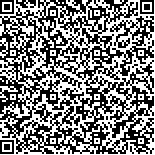| 摘要: |
| 该文提出了一个综合自然、社会和经济等多因子的粮食安全评价方法,选择了人均粮食占有量和 人均GDP两个指标来描述粮食安全状况。人均粮食占有量的变化可以表述粮食供给性和稳定性变化状况, 人均GDP变化则可以反映粮食可获取性和购买能力的变化,两者综合决定一个国家或地区的粮食安全状 况。这两个指标分别和3个空间模型(空间EPIC模型、作物选择模型和IFPSIM模型)关联。利用该方 法,以网格大小为6分弧度的地理单元为评价对象,以2000年为初始年份,对未来2020年的全球粮食安 全状况进行了评价。研究表明,粮食供给短缺与贫困是危及粮食安全的最主要因素。到2020年,多数南亚 国家和非洲国家,由于其人均粮食占有量和人均GDP两个指标值都显著降低,粮食供应不足和贫困一起将 可能导致该区域存在粮食危机和饥饿风险。对于其它区域,日益增长的粮食需求可以通过本区域的粮食生 产自给予以满足,或通过外部购买或粮食进口得到满足,总体上不存在粮食安全问题。 |
| 关键词: 粮食安全 人均粮食占有量 人均GDP 评价 |
| DOI:10.7621/cjarrp.1005-9121.20100104 |
| 分类号: |
| 基金项目: |
|
| A NEW METHOD OF FOOD SAFETY ASSESSMENT |
|
Wu Wenbin1, Yang Peng2, Tang Huajun2, Zhou Qingbo2, Chen Zhongxin2, Shibasaki Royosuke3
|
|
1.Key Laboratory of Resources Remote Sensing & Digital Agriculture, Ministry of Agriculture, Beijing 100081/Institute of Agricultural Resources and Regional Planning, Chinese Academy of Agricultural Sciences, Beijing 100081/Center for Spatial Information Science, University of Tokyo, Tokyo 153-8505, Japan;2.Key Laboratory of Resources Remote Sensing & Digital Agriculture, Ministry of Agriculture, Beijing 100081/Institute of Agricultural Resources and Regional Planning, Chinese Academy of Agricultural Sciences, Beijing 100081;3.Center for Spatial Information Science, University of Tokyo, Tokyo 153-8505, Japan
|
| Abstract: |
| A new method for spatially explicit assessment of food safety in consideration of a combination of the biophysical, social and economic factors of food safety was presented in this paper. Two representative indicators, i.e., per capita food availability and per capita GDP, were used to cover the four dimensions of food safety as much as possible. These two indicators were then linked to three models, i.e., spatial EPIC model, crop choice model and IFPSIM model. This proposed approach was applied to assess the food safety at a global scale over a pe- riod of approximately 20 years, starting with the year 2000. The results show that low food production and poverty remains the determining factor for food insecurity. Certain regions such as southern Asia and most African countries will likely remain hotspots of food insecurity in the future, as both the per capita food availability and the capacity of being able to import food will decrease between 2000 and 2020. Other regions such as China, most eastern Euro- pean countries and most southern American countries where there is an increase in per capita food availability or an increase in the capacity to import food between 2000 and 2020 might be able to improve their food safety situation. |
| Key words: food safety per capita food availability per capita GDP assessment |

